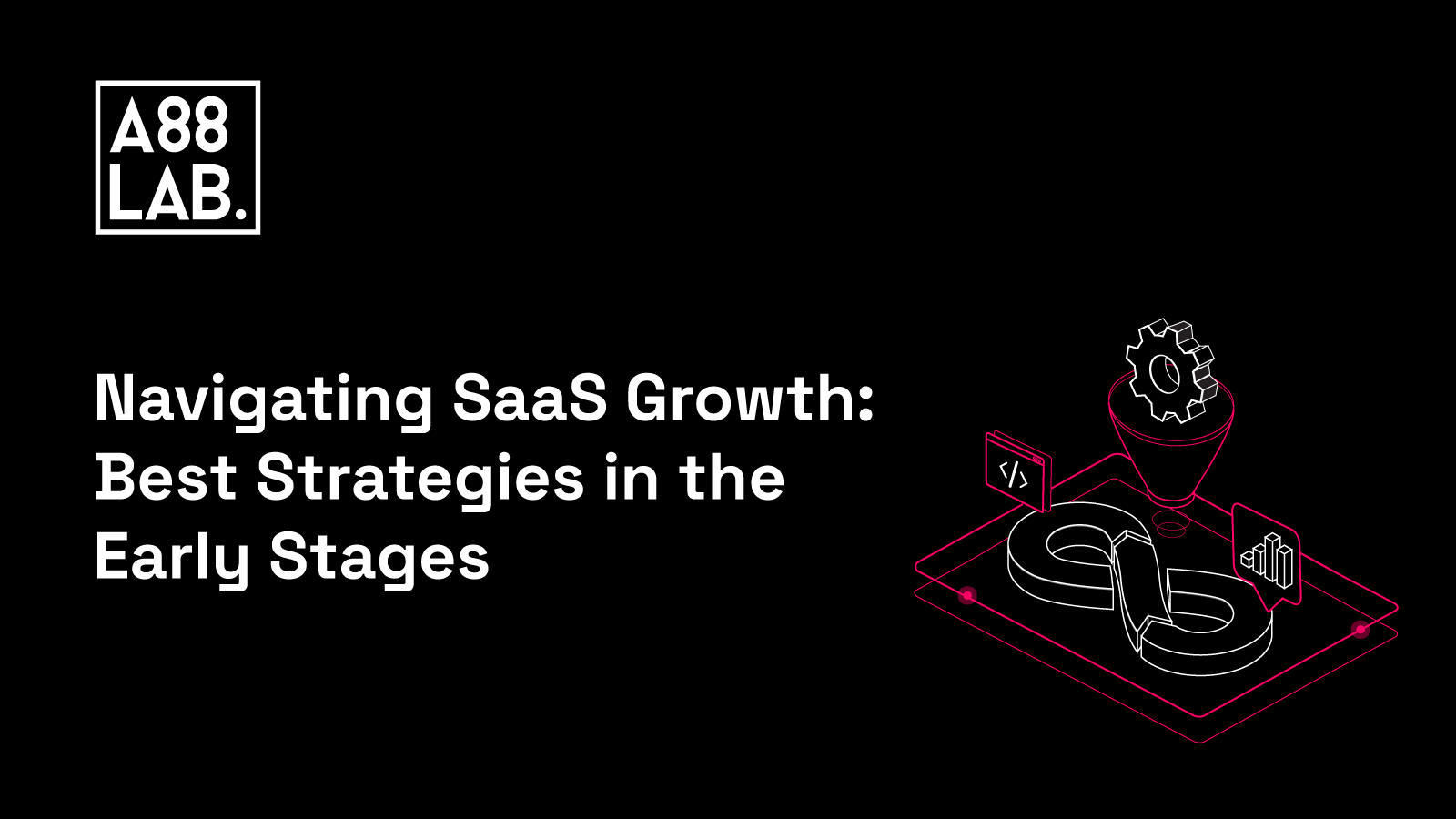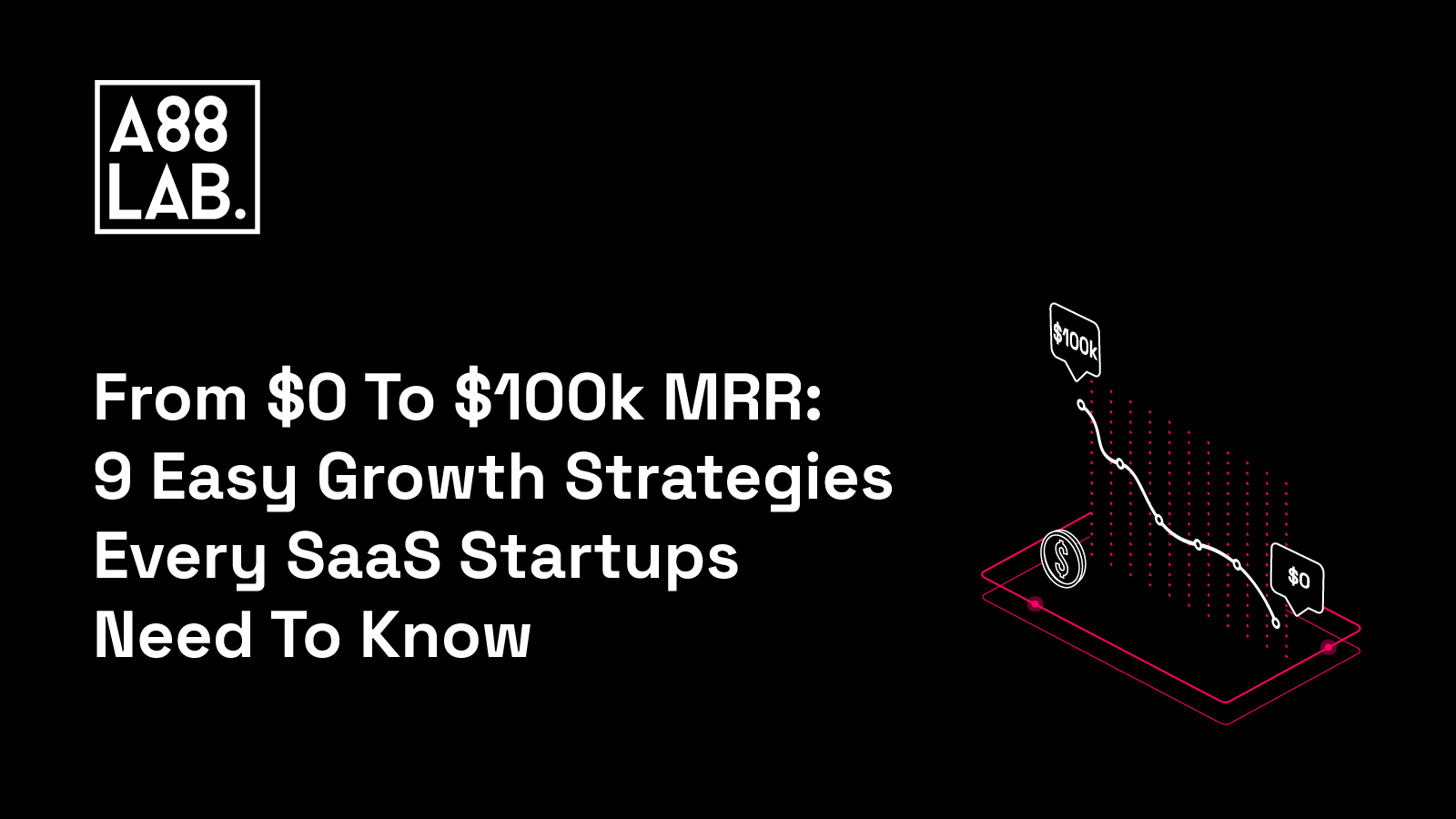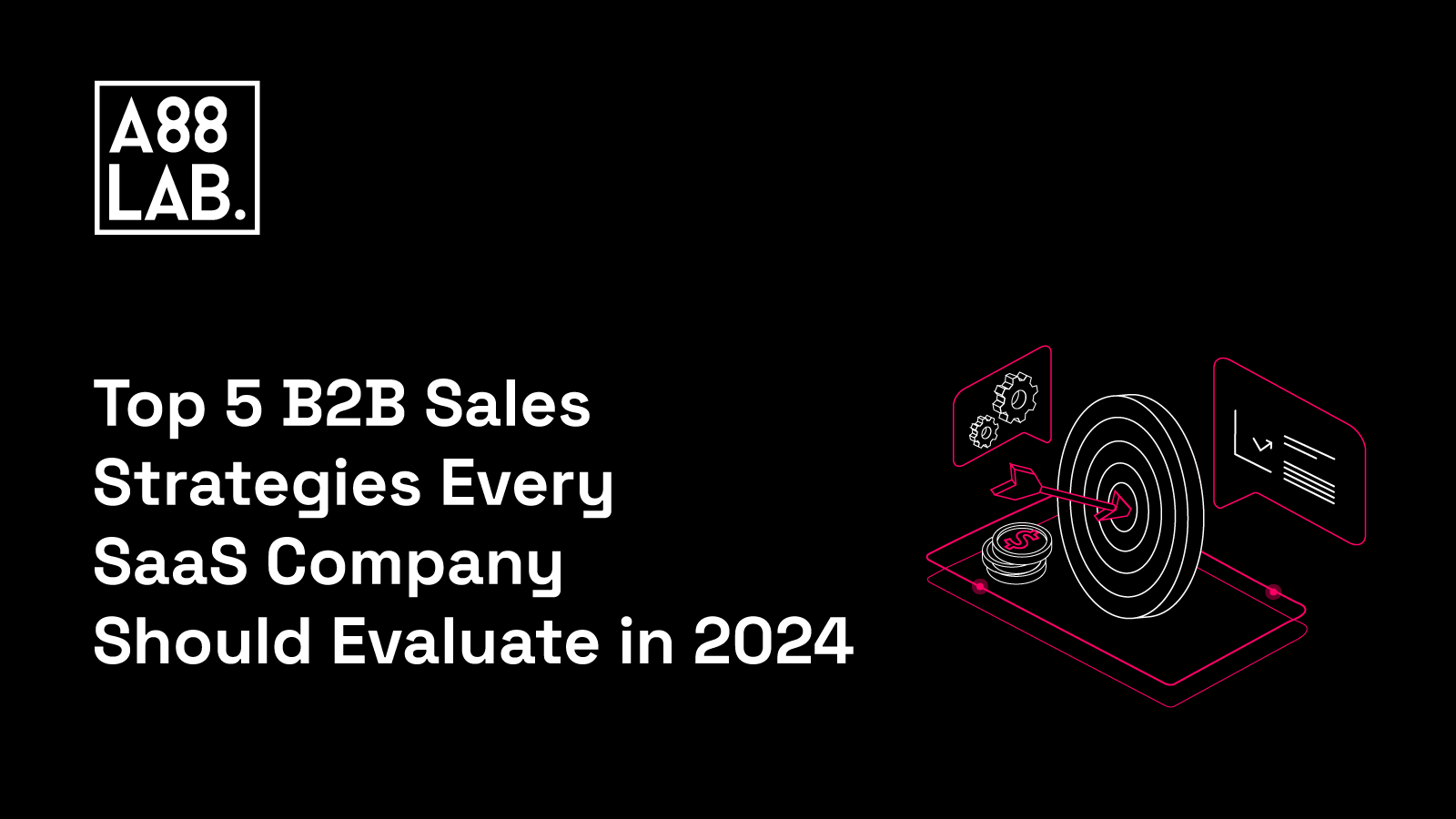Starting a SaaS business and getting that first customer is probably one of the most exciting and, at the same time, nerve-wracking experiences for any entrepreneur. A successful SaaS growth strategy is like a roadmap that shows the different marketing techniques and actions a company needs to implement in order to get more customers and make their SaaS product stand out.
Scaling your SaaS requires effectively communicating the benefits of your software, such as increased productivity, time-saving, and cost-effectiveness, as well as the ROI it can provide. By demonstrating how your solution can solve a particular pain point your target audience is facing, you create a compelling value proposition that can attract and retain customers.
In the following chapters, we will explore some of the best growth strategies for early-stage SaaS companies based on our extensive experience working within the industry.
Niche Targeting
Targeting the right niche market is a step that any SaaS startup wanting to increase their growth can’t miss, as it can make all the difference between success and failure. By focusing on a specific market segment, you distinguish your business from the competition and create a loyal customer base.
However, finding the perfect niche is often difficult, so here are a few tips to consider:
Find a Market With a Potential for Growth
When it comes to the early stages of your SaaS, finding the right customers feels like moving through unknown territory, figuring out your path without a map. It's not just about choosing the right target; it's about figuring out where your business can grow and thrive the most without too much competition. Basically, you have to find an audience that is large enough to bring you sustainable growth but small enough not to be generic.
Start by conducting thorough research to gain a clear understanding of what your target audience prefers and what doesn't. Instead of just focusing on what they already know they need, try to identify the problems they might not even realize they have. This will make you the solution to their problems, but will also help you stand out from the crowd.
Ask yourself what hole in the market got you to the idea of your SaaS product in the first place and focus on filling that gap. Look for opportunities where there's room for your business to grow and stick around for the long haul to ensure a steady stream of customers.
Conduct Market Research Through Tools Like MicroAquire or Indie Hackers
When trying to grow your SaaS, identifying what could be the perfect niche market for you is a step you can't miss. Two certain platforms that can help you make these informed decisions are MicroAquire and Indie Hackers. They allow you to explore different startups and their niches, understand their target audience, and analyze market trends.
MicroAquire is like a marketplace where you can buy or sell SaaS businesses. It gives you some sweet insights into existing markets and finds opportunities that best match your SaaS product. On the other hand, Inside Hackers takes a peek into the tech stack of companies, which can help you find potential clients based on their current software choices.
By being active on these platforms, you gain a better understanding of the market and make data-driven decisions to help your SaaS growth.
Identify Fast-Growing Trends
As you navigate through the early stages of your SaaS journey, keep an eye on emerging market trends that might align with your product. Look for what's hot in the market, and make sure your SaaS can ride that wave.
Stay informed about any industry shifts, technological advancements, or evolving customer needs. By staying ahead of the curve, you not only position your SaaS startup as an innovative force but also tap into markets with increasing demand.
Use tools like Market Explorer or One2Target to measure the pulse of your target audience. Embracing these trends not only makes your SaaS solution relevant but also ensures that you're not just meeting current needs but anticipating future ones. It's not about chasing the trend but strategically aligning with the change.
Emotional Branding
According to the Harvard Review Business Article, 90% of buying decisions are made subconsciously, while 50% of a brand experience is based on emotion. This is proof that branding is not just about logos, taglines, or colors. It's about creating an emotional connection with your target audience.
As a SaaS startup, it's essential to establish a strong and consistent brand identity from the get-go. This involves understanding your target market's pain points and how your SaaS product can solve them. By using emotions to tell your story and sell your product, you're helping yourself build brand loyalty among your target audience.
Emotional connection helps customers feel more invested in your brand and builds a sense of trust and loyalty. This, in turn, leads to higher retention rates and increased customer lifetime value.
Here are three ways emotional branding can help you with your growth efforts:
1. Use Genuine Storytelling
Sharing stories of how your SaaS solution has helped a current customer overcome their challenges, you demonstrate empathy and build trust with your target audience. This can be especially effective in the early stages of your business when building brand awareness and establishing trust with potential customers is key.
To make the most of your storytelling efforts, remember these three key points:
-
Vulnerability - Don't be afraid to share stories of your own company's challenges and struggles. By showcasing how you've overcome difficulties, you can help potential customers relate to your brand and build trust with your audience.
-
Relatability - Your stories should be relevant to your SaaS products and resonate with your audience's emotions. Share stories of how your product has helped others solve real-world problems, and highlight the benefits of using your product to help potential customers see the value in what you offer.
-
Authenticity - People are turned off by fake stories, mainly because such stories make businesses inauthentic. So, share real stories of customers who have used your products or services. Highlight their feedback and how your SaaS product has added value to their lives. By sharing genuine feedback, you demonstrate how your business can add value to potential customers' lives, building trust and brand equity.
By creating a particular narrative, you can build meaningful connections with customers, helping them visualize the positive impact of using your product.
2. Know Your Audience’s Emotional Triggers
Focus on what excites and motivates your customers and prospects and include it in your marketing and branding strategy. If you're a startup SaaS business, you probably still don't know what triggers your audience emotionally. Therefore, you should take the time to understand your audience and what resonates with them. You can do this by conducting market research, analyzing your competitors, and looking at customer feedback.
As a SaaS business owner, it's crucial to put yourself in your customer's shoes and ask the following questions:
-
What do I want to achieve with this SaaS business?
-
What goals can I accomplish by using their software?
-
How can this SaaS business add value to my work and productivity?
-
How can this SaaS business address my concerns better?
By thinking like your customers, you can identify any gaps and bridge them by knowing what stirs your audience emotionally. Use the insights you gather from your customers and prospects to develop creative marketing strategies and build your brand strategy for your SaaS business. This will help you connect with your potential customers on a deeper level, making them more likely to choose your product over competitors.
3. Provide After-Sales Customer Service
When it comes to emotional branding, after-sales customer service plays a significant role. After all, customers want to feel valued and supported even after they have purchased your product. This is the key to building that long-term relationship with them.
Communicating with your customers after the sale builds trust and loyalty. You can do this by sending personalized follow-up emails, offering customer support through various channels, and actively responding to any feedback or concerns your customers may have.
Good customer service goes beyond just resolving issues; it shows your customers that you genuinely care about their experience and are committed to improving it. This not only helps with customer retention but also increases the chances of positive word-of-mouth referrals for your SaaS business.
Customer Co-creation
In the early stages of your SaaS, nurturing the bond between your customers and your product is paramount, and providing personalized services for your potential customers can be the one thing that helps you differentiate yourself from your competitors.
This can be achieved through various co-creation strategies such as beta testing, inviting feedback for product improvements, and involving customers in decision-making processes. By involving your customers in shaping your SaaS solution, you are not only gaining valuable insights and feedback but also increasing their emotional investment in your product.
Let's take a look at some effective co-creation strategies for SaaS :
1. Beta Testing and Early Access
Beta testing refers to releasing a product or updates to your existing product to a selected group of customers for testing and feedback before it is officially launched. Involving your customers in the testing process allows you to catch any bugs or issues that may have been overlooked during development and helps you gather feedback and suggestions for improvements directly from your target audience.
Early access programs, on the other hand, involve providing exclusive access to new features or updates to a select group of customers before they are available to the general public. This creates a sense of exclusivity and urgency for them to try out your product and provide feedback, which can help generate buzz and excitement around your SaaS solution.
Both beta testing and early access programs involve your customers in the development process and give them a sense of ownership and influence in the product's evolution. This leads to a better product and creates loyal customers who feel invested in your company's success
2. Crowdsourcing Features
Crowdsourcing is a dynamic co-creation approach where you encourage your entire customer base to suggest new features and enhancements. By involving them in the decision-making process, you can prioritize features that align with their needs and wants, ultimately leading to a more customer-centric product.
Implementing a voting system or feedback mechanism allows you to gather data and insights on the features your customers are most interested in, streamline your development process, and ensure that you deliver a product that meets their expectations.
Furthermore, crowdsourcing can also serve as a marketing tool by creating buzz and increasing engagement with your brand. By giving your customers a voice in the product's development, they feel like valued members of your community and are more likely to spread the word about your SaaS solution to others.
3. Collaborative Product Roadmaps
Involving your customers in the product roadmap is another effective way to build a loyal customer base and drive sales. By sharing your future plans and asking for their input, you not only gather valuable insights but also make them feel like they have a stake in the company's success.
Collaborative product roadmaps are also an excellent opportunity for transparency and building trust with potential customers. By showcasing your commitment to customer feedback and incorporating it into your development plans, you demonstrate that you value their opinions and are dedicated to continuously improving your product.
Social Proof Campaigns
Another effective strategy for SaaS growth is through social proof campaigns. It's a concept that relies on the idea that people are more likely to believe something is valid or valuable if they see evidence that others believe it, too. For SaaS companies, this means that having positive experiences and endorsements from existing customers can significantly influence potential buyers.
Social proof is a great strategy to build trust with potential customers. By showcasing satisfied customers and positive testimonials, you can instill confidence in your target audience and alleviate any doubts or concerns they may have about your product.
1. Customer Testimonials, Case Studies, and Reviews
One of the most powerful forms of social proof is through customer testimonials, case studies, reviews, and other user-generated content that showcase the value and success of your product. These types of content provide potential customers with real-life examples of how your product has helped others, making it easier for them to envision the benefits they could experience.
To effectively use customer testimonials as a social proof strategy, make sure to obtain permission from satisfied customers before using their words or images. It's also essential to feature diverse and relatable individuals in your testimonials to appeal to a wider audience. Additionally, use case studies to provide more in-depth and specific information about how your product has helped a customer achieve their goals, making them valuable assets for any SaaS.
2. Third-party Review Websites
In the early stages of your business, focus on building a loyal customer base by using platforms like G2 Crowd, Capterra, or even LinkedIn to boost the voices of your satisfied customers and gain authentic insights into the value your SaaS product delivers. These third-party review websites provide potential customers with unbiased and transparent reviews, making them a valuable source of social proof for your business.
Encourage satisfied customers to leave reviews on these platforms by offering incentives or simply asking for their honest feedback. Monitor and respond to both positive and negative reviews to show that you value customer opinions and are committed to providing the best possible service.
3. Thought Leadership Content
Establishing yourself as a thought leader within your industry is another effective way to build trust and credibility. Creating valuable content in the form of blog posts, white papers, or webinars showcasing your expertise can position your SaaS product as a valuable resource for solving customer pain points.
Use your blog as a platform to share industry insights and best practices or updates about your products. Collaborate with other thought leaders in your space to reach new audiences and establish yourself as an authority within the industry. This type of content can also generate backlinks and improve your website's SEO, driving more traffic to your site and potentially converting leads into customers.
Co-Marketing Partnerships
Co-marketing partnerships is another highly effective strategy for SaaS companies that are in the early stages of their journey. These partnerships involve collaborating with another company or brand to create joint marketing campaigns that benefit both parties.
For example, if you offer project management software, you could partner with an email marketing platform to promote each other's products and services. This creates a win-win situation where both companies can tap into each other's customer base, expand brand awareness, and drive more leads.
By forming strategic partnerships, you can expand your reach and access a new set of potential customers who may already trust and engage with your partner's brand. This synergy can lead to joint marketing campaigns, co-hosted webinars, or shared content creation, providing exposure to a wider audience.
What are some ways to identify potential co-marketing partners? Look for partners whose products or services complement yours, creating a natural alignment that adds value to both sets of customers. Co-marketing partnerships will increase your brand visibility and foster credibility through association with reputable allies.
Some co-marketing strategies you can include:
1. Content Collaboration
Look for partners in your industry or complementary industries who share a similar target audience and offer non-competing products or services. Brainstorm ideas for joint content creation, such as guest blogging on each other's websites, co-writing an ebook, or creating a podcast series together.
By collaborating on content, you reach a wider audience and can provide valuable insights to potential customers by leveraging both parties' expertise. Additionally, this content collaboration can also generate backlinks, improve your SEO efforts, and build credibility for your brand.
2. Cross-Promotions
Similar to content collaboration, cross-promotions involve partnering with other companies to promote each other's products or services. This can involve joint email marketing campaigns, social media shoutouts, or offering discounts or free trials to each other's customers.
Using cross-promotions as part of your SaaS growth strategy allows you to tap into a new customer base and build trust by leveraging your partner's credibility. It also creates an opportunity for potential customers to try out your product or service at a discounted rate, increasing the chances of conversion.
3. Event Collaborations
Partnering with other companies for events, whether in-person or virtual, can be a powerful way to generate leads and build brand awareness. By hosting an event together, you can combine resources and reach a larger audience. This could include webinars, workshops, conferences, or industry networking events.
Not only does this give your brand exposure to potential customers, but it also allows you to showcase your expertise and establish yourself as a thought leader in your industry
Conclusion
Achieving growth takes time, effort, and a variety of tactics. It involves building relationships, providing value, and continuously adapting to any market trends.
By implementing a well-rounded growth strategy that is a combination of inbound marketing, lead nurturing, cross-promotions, and event collaborations, you develop a solid foundation for your SaaS in the early stages.
Remember to always stay focused on your target audience, continuously track and analyze data, and be open to trying new approaches. With the right strategies and mindset, your SaaS company will stand out in a competitive market and achieve long-term success.
.png)


